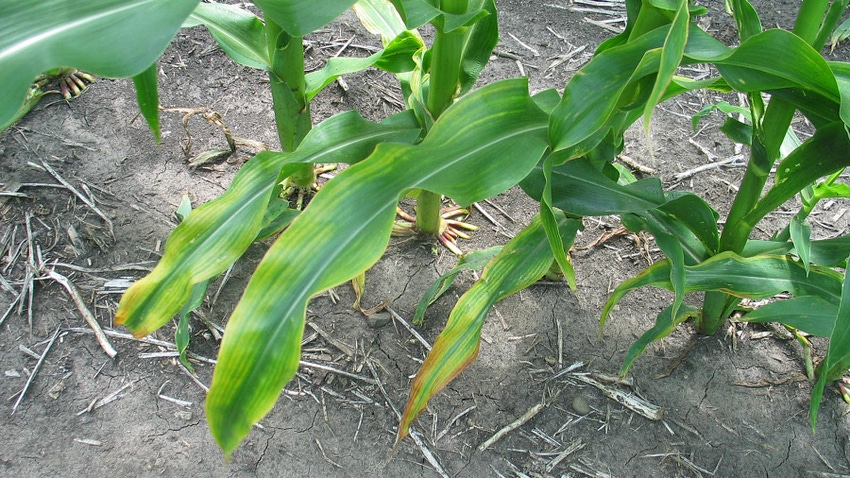
By design, the corn plant pulls up nutrients throughout the growing season and pushes it to grain at the end of the year, but the process is a balancing act.
If those nutrients move too much one way or another, corn stalk integrity starts to come in question, warns Stephanie Smith, agronomy manager for Golden Harvest.
“Corn plants will feed on their own plant tissue to have the carbohydrates needed to fill that kernel with our nitrogen, sulfur and potassium later in that season,” she explains. “From the kernel-fill standpoint and dependent on hybrid, it can flex-yield 30 bushels. That's when we start to see the cannibalization of that stalk.”
Poor stalk quality leads to lodging and breakage, ultimately leading to a difficult harvest and yield loss.
Cause for concern
There are early signs that stalk stability might be a problem; there are also opportunities to improve corn plant integrity.
Throughout the growing season, Smith says, farmers should observe corn leaves and ask the following questions:
Is there any yellowing?
Do you see the midvein?
Is the yellowing on the sides or around the midvein of leaves?
Yellowing at midvein is from lack of nitrogen. Yellowing at the sides of leaves, she adds, is likely a potassium deficiency in most Midwest growing environments.
“If we start to see those nutrients pull out of the leaf,” Smith says, “we can assume that we're probably pulling from that stalk as well.”
Find the culprit
You can determine the level of nutrients before the corn plant begins to cannibalize the stalk. Here are three things that Smith recommends:
1. Pull tissue samples. Take tissue samples from the newest growth — that would be the top of the plant. Send them in for analysis.
2. Collect soil samples. Where you should pull soil samples is a topic of debate, Smith says. Most corn is on 30-inch rows. Do you pull at 15 inches away from the plant, or do you pull right next to the plant?
“My opinion, when it comes to nutrients, we're feeding that plant, not the soil,” she says. “I want to pull a sample within that root ball because I know my roots are there and dependent on soil moisture; maybe those nutrients don't move it 15 inches away from the plant.”
3. Split stalks. When splitting stalks later in the growing season to assess plant health, Smith says you should see a full and complete stalk lined with a white foam. “When we start to see that turn into the little Styrofoam chunks, we know that we're starting to re-mobilize some of those nutrients.” If chunks are present, farmers need to scout remaining fields to determine which ones to harvest first to mitigate yield loss.
Nutrient movement is not “bad,” Smith says. It becomes a problem when there is too much movement away from the plant. That is when farmers need to take samples to see exactly what nutrients are available.
About the Author(s)
You May Also Like






